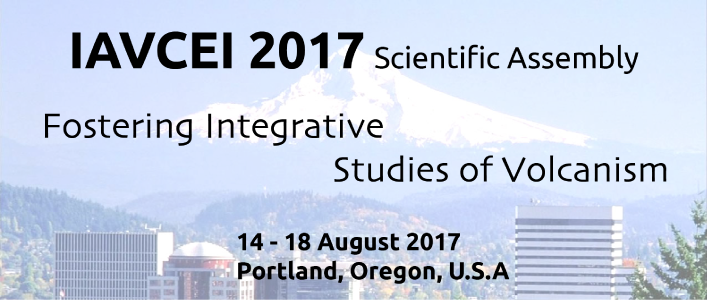SCIENTIFIC PROGRAM
IV. Volatile influences on eruption style, degassing, atmospheric chemistry and climate
IV.4 Volcanic plumes and clouds: from injection to dispersion
Conveners:
Sara Barsotti, Icelandic Meteorological Office; sara@vedur.is
Marcus I. Bursik, University at Buffalo; mib@buffalo.edu
Corrado Cimarelli, Ludwig Maximillians University; cimarelli@min.uni-muenchen.de
Benjamin J. Devenish, U.K. Met. Office; ben.devenish@metoffice.gov.uk
Kimberly Genareau, University of Alabama; kdg@ua.edu
Jennie Gilbert, Univ. Lancaster; J.S.Gilbert@lancaster.ac.uk
Larry G. Mastin (main convener), USGS Vancouver; lgmastin@usgs.gov
Explosive eruptions are linked to a range of atmospheric phenomena and the most geographically widespread effects of volcanic eruptions are through atmospheric transport of tephra. Many first-order processes that govern plume behavior and ash dispersion are poorly understood and difficult to parameterize or measure, including temporal variation of mass eruption rate, air entrainment, plume electrification, gravitational spreading, water phase changes, and ash particle aggregation. New observations have come from high-speed video, radar, infrasound, seismicity, modern satellites, LIDAR, and even crowd-sourcing on social media. Plume models are using new techniques for validation, and are increasingly used in tandem with umbrella-cloud models when forecasting ash dispersal during eruptions. This session welcomes new observations, techniques, experiments and theories that illuminate plume, umbrella cloud and ash cloud phenomena that improve our fundamental understanding of explosive eruption dynamics. The aim of pioneering these approaches is to inform the detection and mitigation of volcanic hazards.


